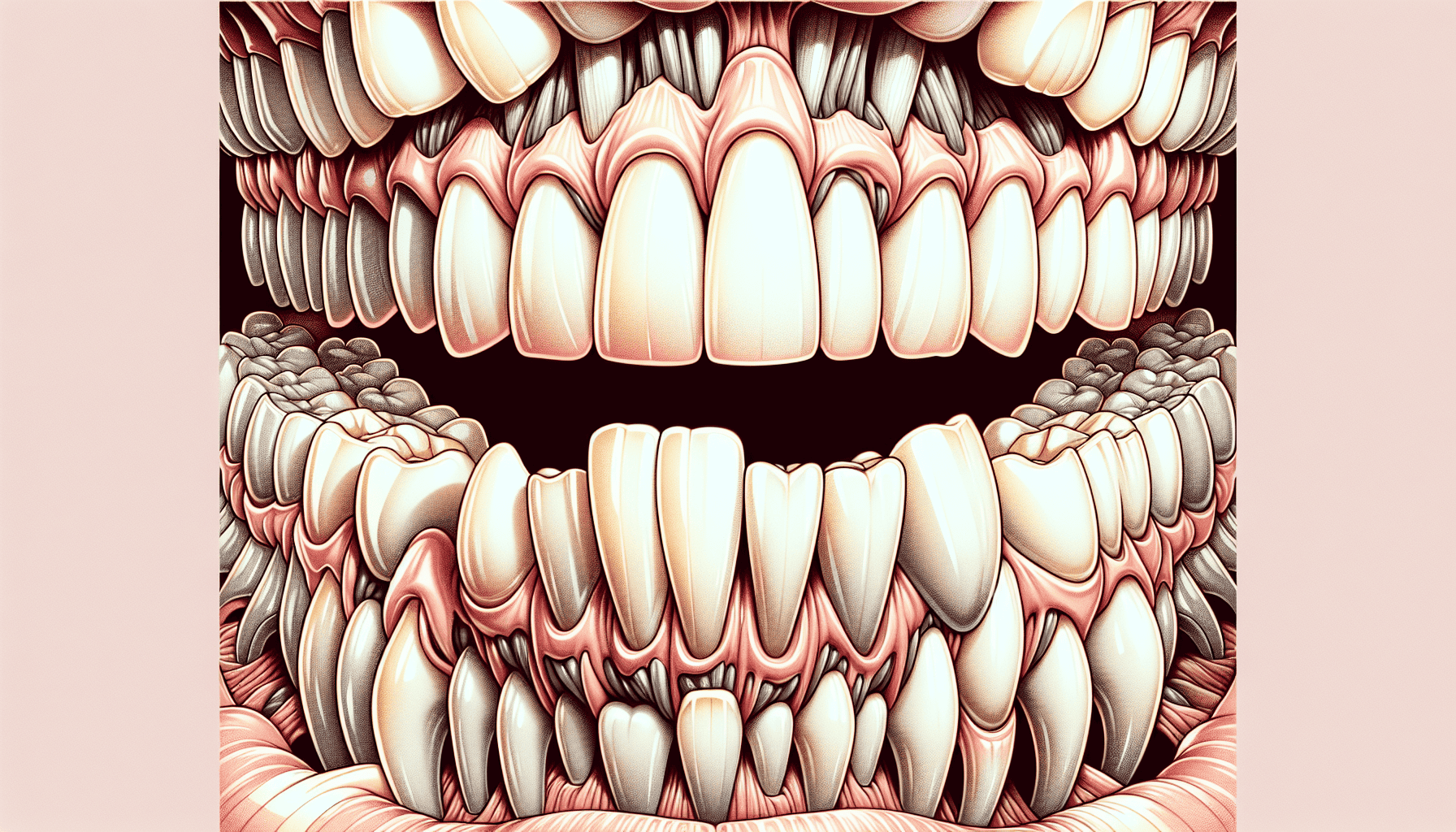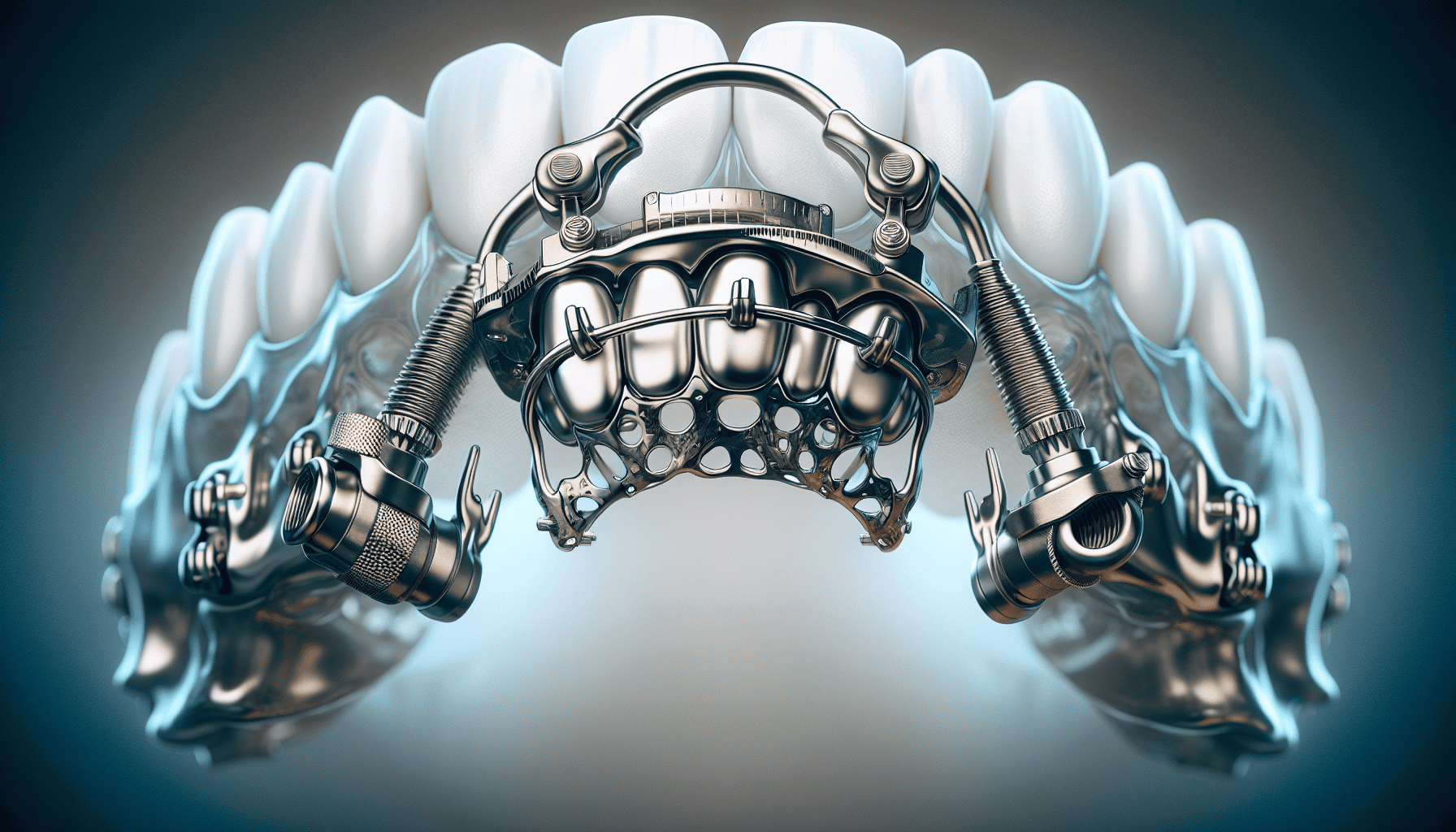If you or your child has a crossbite, you’re likely considering palatal expanders for crossbite as a treatment option. This article will delve into what palatal expanders are, how they can effectively treat crossbites, and tips for successful fitting. With this guide, you’re on the right track to understanding and managing your orthodontic needs.
Key Takeaways
- A crossbite is an orthodontic condition where the upper teeth fit inside the lower teeth due to genetic and developmental factors, which if left untreated, can lead to jaw pain, gum disease, and tooth wear.
- Palatal expanders are customized orthodontic devices that apply gentle pressure to widen the jaw bone, correct alignment, and treat crossbites effectively, particularly with early intervention during childhood.
- Palatal expander types include fixed, removable, rapid, surgically assisted, and implant-supported varieties, with the choice depending on the degree of adjustment needed, and require proper fitting, adjustment, and oral hygiene to maintain oral health.
Understanding Crossbite and Its Impact on Oral Health
A crossbite is essentially a misalignment where the upper teeth fit inside the lower teeth, which can affect either the front teeth (anterior crossbite), the back teeth (posterior crossbite), or both. The root causes of crossbites are usually genetics and certain developmental factors, so if your close relative has a crossbite, you might be more likely to have one too.
The problem with a crossbite is that if it’s left untreated, it can lead to severe consequences, including jaw pain, gum disease, and wear on the teeth. This is why it’s vital to address this orthodontic issue as early as possible.
So, how does one correct a crossbite? The answer lies in a revolutionary orthodontic appliance known as the palatal expander.

Palatal Expanders: An Orthodontic Solution for Crossbite
A palatal expander is a custom-made orthodontic appliance designed to:
- Apply gentle pressure
- Gradually widen the jaw bone
- Create a wider palatal space
- Realign the palate tissues
- Broaden the upper jaw
- Ultimately result in improved bite alignment.
This appliance, often used as a non-surgical alternative to jaw surgery, operates through a small metal framework equipped with a central screw. This screw is methodically tightened using a special key, gradually increasing the width of the narrow upper jaw to alleviate the crossbite and improve the alignment with the lower jaw.
But let’s dig deeper into how palatal expanders play their role in treating crossbite and why early treatment is beneficial.

The Role of Palatal Expanders in Treating Crossbite
Palatal expanders are used to correct crossbites by creating space for crowded teeth, improving mouth breathing, and correcting jaw asymmetry. The most effective stage for palatal expansion treatment is during adolescence, before the adult teeth are completely in place.
During palatal expansion treatment, you might notice a space develop between the two front teeth. But don’t worry, this is a temporary effect and typically begins to close after the expansion phase is completed, and the appliance’s screw is no longer turned.
But why is early treatment beneficial? Let’s explore.
Benefits of Early Treatment with Palatal Expanders
Orthodontists commonly recommend initiating palatal expander treatment around 7 to 8 years old, when children’s jawbones are still developing. Early treatment with palatal expanders can:
- Lead to permanent results
- Minimize discomfort
- Alleviate issues such as dental crowding and posterior crossbite
- Potentially eliminate the need for tooth extraction
Treating children with palatal expanders typically requires 2 to 3 months, which is significantly shorter compared to the potential year or more needed for teens and adults.
Now, with this knowledge, how do we select the right type of palatal expander?
Selecting the Right Type of Palatal Expander for Your Needs
There are several types of palatal expanders, including fixed and removable expanders, as well as custom-made varieties. The choice of the type of palatal expander often depends on the extent of jaw widening required, with removable expanders typically suggested for minor adjustments. Some of the expanders we offer include:
Rapid palatal expanders, also known as rapid palate expander, are affixed to the upper back teeth and use a central screw mechanism to progressively separate the palatal bones in order to widen the jaw. For more complex cases, surgically assisted rapid palatal expander and implant-supported expanders are used. Another option is the removable palate expander, which resembles clear aligner trays, is worn continuously throughout the day, and does not always require daily screw adjustments.
But how does one fit and adjust a palatal expander? Let’s find out.
Step-by-Step Guide to Fitting and Adjusting a Palatal Expander
The process of fitting and adjusting a fixed palatal expander starts by following these steps:
- Have the patient in a well-lit area with their head tipped back for good visibility.
- Firmly grip the key provided for the palatal expander.
- Insert the key into the hole at the front of the expander to start the adjustment.
The expander is rotated by pushing the key gently and steadily from the front to the back of the mouth until it meets resistance, which signifies that the adjustment has been made and the next hole is in position for the upcoming adjustment. After the adjustment, the key is removed by pressing it back and down toward the tongue.
While adjusting a palatal expander is important, ensuring comfort and efficacy during this process is crucial.
Ensuring Comfort and Efficacy During Adjustment
It is normal for patients to experience increased saliva production and a temporary change in speech after getting a palatal expander. Turning the expander may cause a tingling sensation on the bridge of the nose but should not be painful.
Initial activation of the palatal expander can cause pressure on the roof of the mouth, forehead, or between the eyes, which are areas close to some facial bones. If the palatal expander causes excessive pain or discomfort, or if it is loose or damaged, an orthodontist should be consulted immediately.
The rate of jaw widening with rapid palatal expanders is about 0.5 millimeters per day, and the total treatment typically ranges from three to six months.
Beyond the fitting and adjustment, maintaining oral health with a palatal expander is essential.
Maintaining Oral Health with a Palatal Expander
To maintain the cleanliness of the palatal expander and prevent bacterial buildup and decay, it is important to follow these steps:
- Brush the expander, along with teeth, at least twice a day.
- Check the expander daily for food or plaque and remove them using a water flosser.
- Use a mouth rinse to maintain the cleanliness of the palatal expander.
- Follow the specific guidance provided by your dentist on cleaning the palate and teeth attached to the expander to ensure proper oral hygiene.
But what happens after the palatal expansion? Let’s dive into the journey beyond.
The Journey Beyond Palatal Expansion
After completing palatal expansion, there is a crucial retention period to prevent regression of the achieved adjustment. The palatal expander must be kept in place for approximately three more months after the desired expansion is reached to secure the widening of the upper jaw.
Once the retention phase is through, additional orthodontic care such as braces may be necessary to ensure teeth are properly aligned. These subsequent orthodontic devices help correct any remaining issues like crowded or crooked teeth, finalizing the alignment process initiated by the palatal expander.
With all this information, it’s clear that personalized orthodontic care is the key to optimum results.
Tailoring Your Treatment Plan: Expert Advice from Orthodontists
Personalized orthodontic care is essential for optimum oral health and achieving the desired smile, as each person’s dental and facial structure is distinctive. Though patients may exhibit similar dental issues, the specific treatment time and methods can vary considerably, depending on individual needs and conditions.
Orthodontic treatment is designed specifically to meet your unique smile needs and goals. A personalized treatment plan is determined based on individual needs and the complexity of the crossbite, thus underscoring the importance of consulting with an orthodontist to ensure the best smile outcomes.
Summary
From understanding what a crossbite is to the role of palatal expanders and beyond, we’ve explored the journey of correcting this common orthodontic issue. Remember, personalized orthodontic care plays a crucial role in achieving the best smile outcomes. So, don’t let a crossbite keep you from flashing your brightest smile!
Frequently Asked Questions
How much is an expander for crossbite?
The cost of an expander for crossbite can range from $1,000 to $6,000, depending on the complexity and age of the patient. Prices may vary for individuals.
What is a crossbite and how does it affect oral health?
A crossbite is a misalignment that occurs when the upper teeth fit inside the lower teeth. If left untreated, it can lead to consequences such as jaw pain, gum disease, and teeth wear.
How do palatal expanders work?
Palatal expanders work by gradually widening the jaw bone to create a bigger palatal space and improve bite alignment. This allows for better positioning of the teeth and helps with orthodontic treatment.
What is the best age for palatal expansion treatment?
The best age for palatal expansion treatment is during adolescence, before the adult teeth are completely in place. This is the most effective stage for this treatment.
How do I maintain oral health with a palatal expander?
To maintain oral health with a palatal expander, make sure to brush the expander and teeth at least twice a day, check for food or plaque daily, and use a water flosser and mouth rinse for cleanliness. This will help prevent oral health issues while using the expander.
 703-712-1053
703-712-1053 